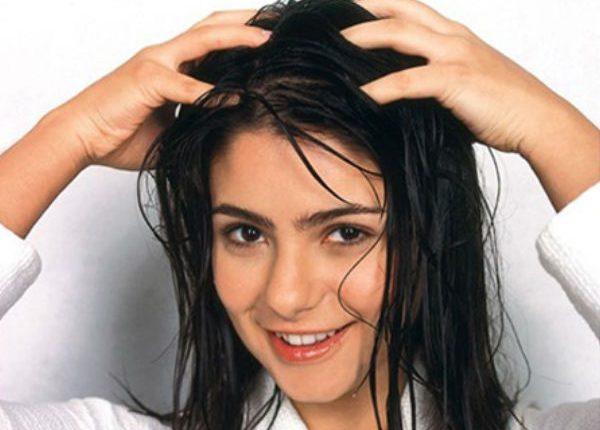10 Tips To Take Care Of Coloured Hair At Home
While getting your hair dyed at the salon may be a terrific idea, what about caring for your beautifully colored hair? You only need a few pointers to keep your colored hair looking great at home without spending a lot of money! By coloring your hair, you’re allowing chemicals to permeate your hair, making it more vulnerable to breakage, damage, and dryness. Additionally, without the proper upkeep, color-treated hair can quickly become lifeless and drab.
In this piece, we will provide you with a list of easy and basic hair care techniques so that you may maintain the health of your tresses and keep them safe. Continue reading to find out more!
Ten Guidelines for Maintaining Your Colored Hair
1. Wait For Three Days
If you want your hair to be the best long lasting hair color, don’t wash it for 72 hours after coloring. Hair cuticles are unprotected and exposed after hair dyeing due to the use of chemicals. To chemically modify the hair structure is the purpose of hair dyes. This type of hair is more fragile and easy to break.
2. Protectant Shampoo
You may do a lot to keep your hair color looking fresh, but using a good shampoo is crucial. If you’ve dyed your hair, you should only use a shampoo made for that purpose. It will protect your hair from harm and keep its pH stable. Using a color-safe shampoo may slow down the rate at which your hair dye fades. Hair is not only cleaned and conditioned, but also repaired and restored by the use of the moisturizing and nourishing ingredients included in these products. Avoid using shampoos that include sulfate or alcohol. They will strip color from your hair as well as moisture.
3. Wash your hair less
If you color your hair and wash it frequently, the dye will wash away and the color will fade. Hair loses its natural oils when washed frequently, making it dry, dull, and lifeless. Just reduce how often you wash your hair and use shampoo based hair colour, and the problem will go away.
4. Use Dry Shampoo
Because cleanliness is something that cannot be compromised, you should use a color-safe dry shampoo in the days between washes to remove the grease, debris, and product buildup that has accumulated in your hair. This will remove the filth and gunk from your hair without causing the color to be stripped from your hair due to excessive shampooing.
5. Condition Your Hair
Color-treated hair needs conditioner after every shampoo. It’s important that the conditioner you use is safe for dyed hair. These conditioners coat the strands of hair in a layer of defense. Since the cuticles are closed and the moisture is held in, the hair gets gloss, volume, and luster. This means that your hair will be left feeling nourished and looking shiny after using it.
6. Avoid High Temperatures
Hot water can damage and fade color-treated hair, so it’s best to take cool or lukewarm showers instead. The same holds true for other heat-based styling products like curling irons, straighteners, and blow dryers. Since the cuticle is opened up by the heat, the hair’s protective outer layer is compromised, and the color runs freely. When you need to use heat on your hair, protect it with a serum or spray.
7. Hair Deep Conditioning
Give your dyed hair a deep conditioning treatment once a week to bring out its natural shine. Distribute the therapy into wet hair, beginning at the roots and working outward. Wrap your hair in a soft towel or pull it into a bun, and leave the treatment in for 30 minutes. The results include softer, glossier hair after you rinse it out.
The coloring of your hair causes additional damage to your hair’s protein, which is another unwanted side effect of dyeing your hair. When your hair begins to break off and stretch out, you should realize that it is in desperate need of protein. When it is wet, it may also have the texture of something that is somewhat mushy. Providing your hair with protein to nourish it is the sole solution to this problem.
8. Apply Leave-In Treatments
Silicones, which are found in leave-in conditioners, work to create a protective barrier over the cuticle of the hair. This helps reduce UV damage and reduces post-processing frizz, which is a bonus. In addition to this, they shield your hair from the potential harm that is brought on by the use of heat styling tools. Your hair can be protected from the damaging effects of the environment while also having its tangles removed if you use a leave-in conditioning treatment. Keep an eye out for leave-in conditioners that have been specifically developed to shield color-treated hair from damage. If you use blow dryers, curling irons, or straightening irons on a regular basis, or if you spend a lot of time in the sun or in close proximity to a heater, this is an extremely crucial point to keep in mind.
9. Maintain A Healthy Diet
What you put in your body has a direct impact on the health of your hair as well as the appearance of it. The vitality that drives healthy hair growth and shine comes from the nutrients that are obtained by eating well. Your scalp and hair receive nourishment from foods that are high in iron and protein since these nutrients are necessary for the construction of keratin, the protein that gives your hair its strength, enhances its texture, and promotes new hair development. Consume foods like lean meat, fish, low-fat cheeses, egg whites, spinach, and soy to maintain the healthiest appearance possible for color-treated hair. Eat healthy snacks like fruits, veggies, nuts, and grains in between meals.
10. Hair Care Supplements
Hair that has been dyed can still benefit from vitamins because they help maintain the hair’s natural health and shine. Vitamin C maintains robust capillaries in the scalp. In addition, iron from plant proteins is more easily absorbed when vitamin C is present. Biotin, a type of vitamin B, is great for giving your hair some much-needed muscle and polish. However, there is a lack of evidence from scientific studies. Salmon, carrots, egg yolks, and sardines are all good food sources of biotin. Vitamin supplements are useful for maintaining healthy hair and a robust physique when a nutrient-poor diet is to blame.

